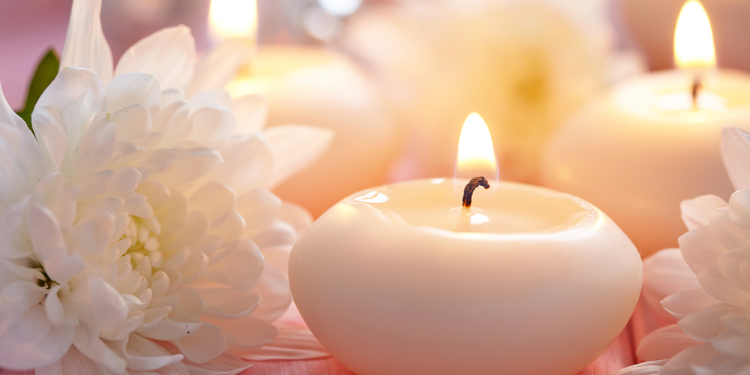
Contrary to popular belief, the Day of the Dead is not a sad day. Nations around the world celebrate the Day of the Dead in a unique way. All Saints' Day, celebrated on November 1st, is a public holiday in many countries. So if you happen to be in one of these countries or you're planning to move there, here's what you can expect on All Saints' Day and the Day of the Dead.
Many of us are usually keen to celebrate Halloween without taking into account the symbolism and traditional aspect. Bearing its origin from Anglo Celtic Islands, Halloween is celebrated in countries like Ireland, the UK, the USA, Canada, Australia, and New Zealand on October 31st. It's also commercially widespread in many other countries where you find pumpkins, and ghost, vampire, witch, and monster costumes at every street corner. The day after Halloween is All Saints' Day which is one of the most awaited Catholic holidays, followed by the Day of the Dead on November 2nd. What do we know so far about these celebrations?
Europe

There's some confusion between All Saints Day and the Day of the Dead. In Europe, for example, November 1st in a public holiday in countries like France, Belgium, Luxembourg, Austria, Hungary, Italy, Spain, Portugal, and Poland. However, November 2nd is not, and families usually visit the graves on their lost family members with flowers. On the other hand, All Saints' Day is not a public holiday in countries like the UK, Germany, Ireland, the Netherlands, Switzerland as well as in Scandinavia. Orthodox countries like Russia, Greece, Romania and Serbia, do no celebrate All Saints' Day at all.
In Sweden, where All Saints' Day is a public holiday, people usually take a day to light a candle and flower the graves of their loved ones. In Denmark, neither of November 1st and 2nd are public holidays, so Allehelgensdag, or the Day of the Dead is celebrated on the 1st Sunday of November. In the night of November 1st to 2nd in Sicily, children are gifted a coloured sugar pupi. Spaniards, for their part, gather around the graves with flowers, bread and wine.
Mexico

The Day of the Dead is one of the most awaited and spectacular holidays in Mexico and is far from being a day of mourning. You might be surprised to learn that El día de los muertos is listed as an Intangible Cultural Heritage by UNESCO. If you live in Mexico, you will be amazed by the three days of celebrations. Mexican families gather as from October 31st. November 1st is dedicated to angelitos, that is to say, children, while November 2nd is for adults. Altars are specially built on that day and covered with flowers, candles, and food. Calaveras which are small sugar or chocolate cranes, and the bread of the dead (a small brioche sprinkled with sugar) are deposited along with a small bottle of tequila or mezcal.
Have you ever imagined a family outing at the cemetery? Well, the Mexicans do! They will not only eat and drink but also sing and dance to the favourite songs and music of their deceased loved ones. It's also worth noting that the Day of the Dead is slowly spreading to certain parts of the USA due to the large presence of Mexican migrants.
Central and Latin America

The Day of the Dead is also very popular in Central and Latin America. In Haiti, for example, spirits of the dead are commemorated on November 2nd in a festive atmosphere. The religious ceremony is followed by singing, dancing, drinking and smoking, and everyone is dressed in black and purple. In Carribean Islands, the Day of the Dead is quite similar to Mexico with families lighting red and white candles on family graves.
In El Salvador, people paint their body and face in black and white to take part in the Calabiuza parade. In Guatemala, they celebrate to the rhythm of mariachis. However, tombs are decorated not with flowers but with brightly coloured garlands. On that day, children and adults get together to fly huge and colourful paper kites.
Asia

The Day of the Dead is also celebrated in Asia, but differently, due to the presence of large Christian and expatriate communities. In India, Pakistan, Bangladesh, and the Philippines, people gather at the cemetery to flower graves of their lost family members – which makes flower vendors even happier! But that's not all – the Day of the Dead is also celebrated in Buddhist countries like China, Japan and Nepal, but not during the same period since they abide by the lunar calendar. In China, for example, the Tomb-Sweeping Day, known as Qing Ming, is celebrated in early April. On that occasion, the Chinese will burn fake bank notes and bank cards as well as small cardboard houses and cars. In Japan, the Day of the Dead is known as the Obon Festival and is celebrated mid-July with singing and dancing around a wooden platform that decorated with colourful lanterns. In the end, lanterns are released in the river, followed by fireworks.
Nepal celebrates the Day of the Dead in August or September. If the family does not have a cow, one of the family members disguises themselves as a cow to lead the joyful procession.



















